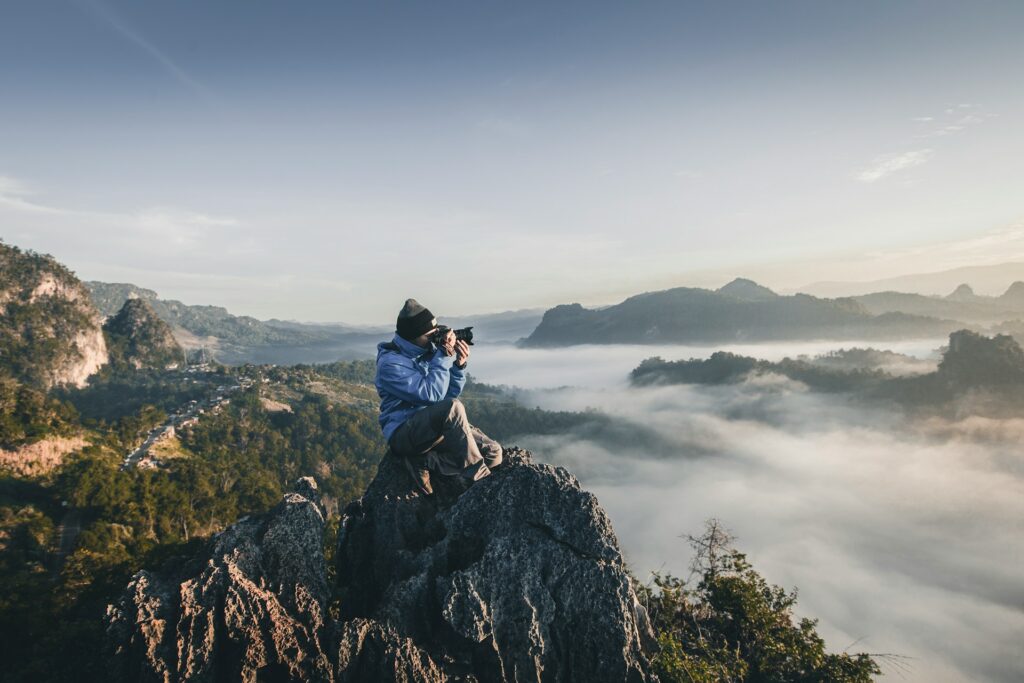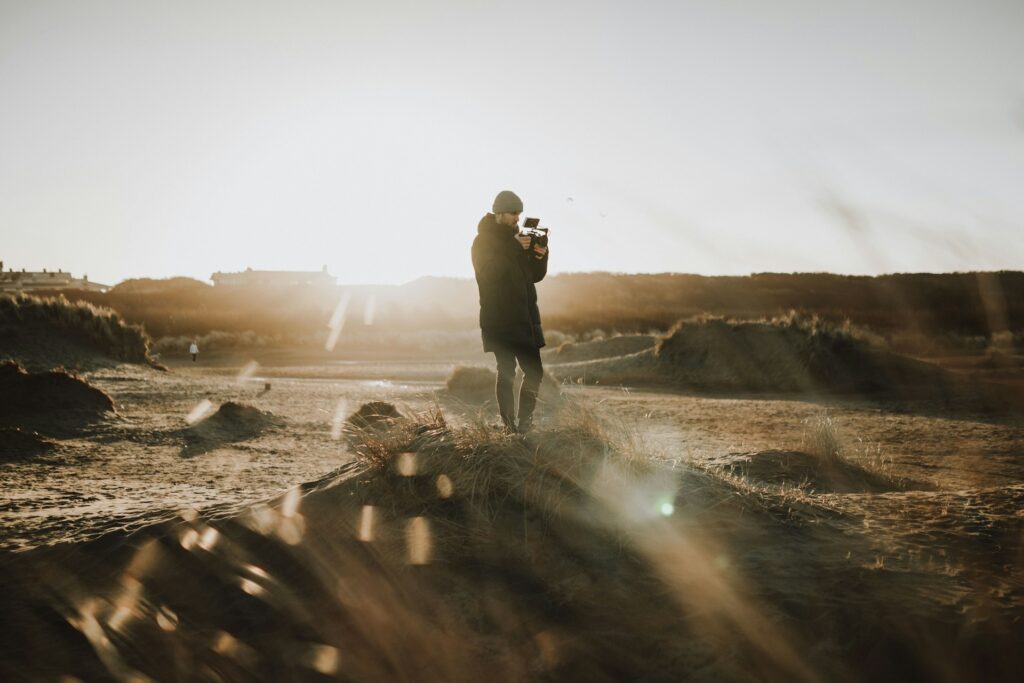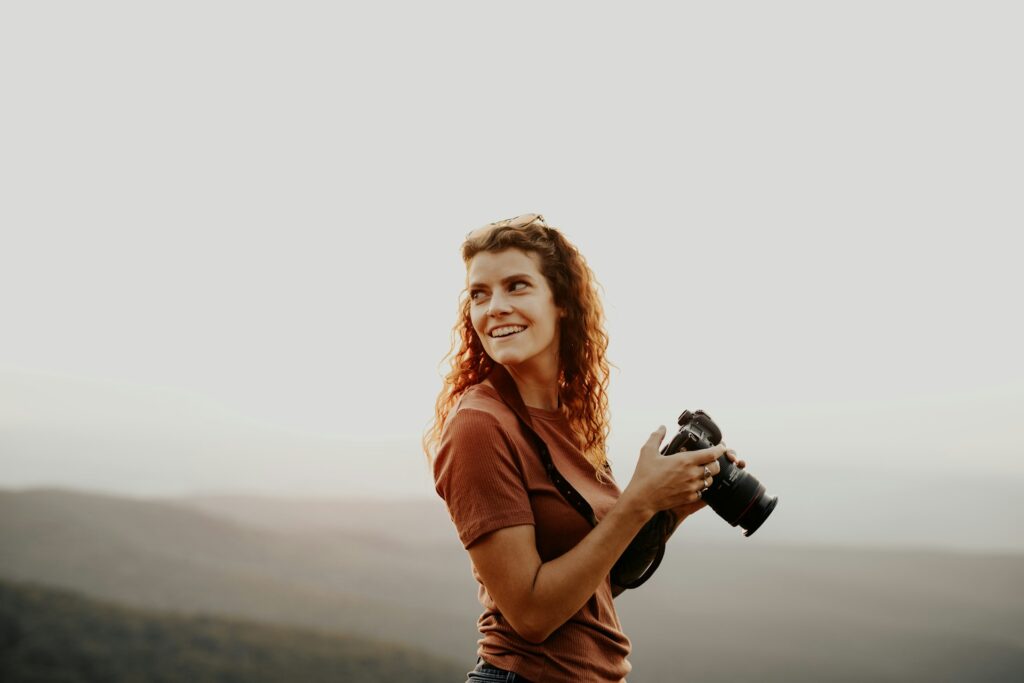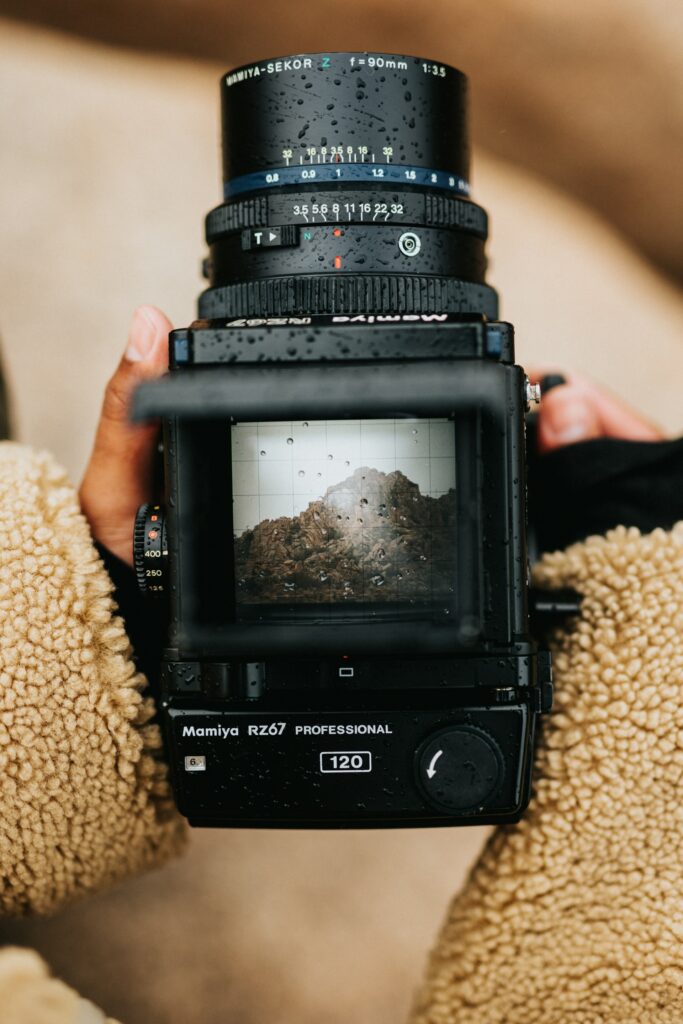If you’re passionate about photography, you’ve probably noticed how addictive it can become – always wanting that next perfect shot, the latest lens, or planning another photography adventure. However, what if we told you that being more environmentally conscious could actually make you a better photographer while saving you money too?
Photography might seem like a harmless hobby, but when you start adding up all the equipment we buy, the trips we take, and the prints we make, the environmental impact can be quite significant. In fact, a record 62 million tonnes of electronic waste was generated globally in 2022, and sadly, camera equipment makes up a notable chunk of this pile.
But here’s the exciting bit: sustainable photography isn’t about giving up the hobby you love. Instead, it’s about discovering smarter ways to pursue your passion that often lead to more creative shots, lower costs, and even better relationships with fellow photographers. Plus, you’ll be doing your bit for the planet – and that feels pretty good!
The movement towards sustainable photography is already gaining momentum through inspiring communities and organisations. Climate Visuals, the world’s only evidence-based initiative focused on climate change photography, is showing how powerful images can be in environmental communication. Meanwhile, SeaLegacy, founded by conservation photographers Paul Nicklen and Cristina Mittermeier, proves that you can create absolutely stunning imagery while making a positive environmental impact.
When you consider that the global printing industry accounts for approximately 1-2% of global greenhouse gas emissions, it becomes clear that even us amateur photographers can make a real difference with some thoughtful choices.
Plan Your Photography Trips Cleverly
Here’s a game-changer that’ll save you both money and carbon emissions: instead of making separate trips for different photo opportunities, why not combine several shoots into single photography adventures?
Think about it – if you’re planning to photograph that beautiful coastal area you’ve been eyeing up, could you also visit the nearby woodland or that charming village on the same trip? Not only will you cut down on travel emissions, but you’ll also get more diverse shots for your portfolio.
Before you set off anywhere, make the most of technology to plan your route. Apps like Google Earth and PhotoPills are brilliant for scouting locations from your sofa, which means fewer reconnaissance trips. Spend some time researching areas that offer varied photography opportunities within walking distance of each other, and always create a shot list before you go – you’ll be amazed how much more productive your trips become.
Don’t forget to connect with other photography enthusiasts in online communities too. You might find someone planning a similar trip who’d be happy to share travel costs and maybe even discover new locations together!

Give Pre-Loved Camera Equipment A Chance
Now, this might be the most important tip for amateur photographers looking to be more sustainable whilst getting better value for money. Instead of always rushing to buy the latest camera or lens, consider exploring the fantastic world of used photography equipment.
Here’s a sobering fact: electronic waste generation is rising by 2.6 million tonnes annually worldwide, which makes extending the life of camera equipment absolutely crucial. By choosing pre-loved gear, you’re not just being environmentally responsible – you’re also being incredibly smart with your money.
MPB, in their comprehensive guide to travel and holiday photography, shows exactly how choosing versatile, quality equipment can reduce the need for multiple camera purchases over time. This is particularly valuable advice for amateur photographers who are still building their kit.
The beauty of buying used cameras lies in the incredible value you get. For the same budget that might only stretch to an entry-level new camera, you could often afford a much more advanced used model with features that will genuinely improve your photography. Think better low-light performance, more sophisticated autofocus systems, or weather sealing that lets you shoot in conditions you’d previously avoid.
Moreover, unlike your smartphone camera, a dedicated camera – even a used one – offers superior image quality, interchangeable lenses, and manual controls that give you the creative freedom to really develop your skills during your sustainable photography sessions.
The used camera market has become incredibly reliable too, with platforms offering warranties and quality guarantees that make buying pre-loved equipment a genuinely stress-free experience.

Fall In Love With Natural Light
One of the most rewarding aspects of sustainable photography is learning to work with natural light – and honestly, once you master this, you’ll wonder why you ever bothered with complicated artificial lighting setups for most of your shots.
Golden hour (that magical time just after sunrise or before sunset) and blue hour (the period just after sunset) provide the most naturally flattering light that often surpasses anything you could create artificially. The warm, soft quality of golden hour light makes everything look more beautiful, whilst blue hour offers that dreamy, ethereal quality that’s perfect for cityscapes and landscapes.
When you do need artificial lighting – perhaps for indoor portraits or creative night shots – LED technology is your friend. Modern LED lights use up to 80% less energy compared to traditional tungsten lights, and many are now battery-powered, which means you can take them anywhere without needing to find a power source.
The photography community is full of generous people sharing clever techniques for working with natural light, including some brilliant DIY approaches for outdoor photography that barely use any power at all. You’ll find that learning to see and work with natural light actually makes you a more observant and creative photographer.


Think Smart About Getting Around
Getting to those perfect photography locations doesn’t have to cost the earth – literally! Public transport can reduce emissions by up to 45% compared to car travel, and it often provides unexpected photography opportunities along the way.
For those times when you need a car – perhaps when you’re carrying heavier equipment or heading somewhere remote – consider car-sharing platforms rather than owning a vehicle just for occasional photography trips. Many areas now have electric vehicle rental services that offer special packages for creative professionals, giving you a sustainable way to reach those distant locations whilst keeping your gear charged up.
Sometimes the journey can be just as photogenic as the destination. Train windows offer unique perspectives on landscapes, and bus routes often pass through areas you’d never normally explore. Keep your camera ready – you never know what you might capture!

Embrace The Digital Revolution
Here’s where amateur photographers have a real advantage over professionals who might have client demands for physical prints. By focusing on digital galleries, online portfolios, cloud storage, and sharing your work on social media, you can virtually eliminate the environmental impact of printing whilst reaching a much wider audience.
Digital workflows are not only more environmentally friendly but often more convenient too. You can share your latest shots instantly with friends and family, create online albums for special events, and build an impressive portfolio without ever touching a piece of paper.
When you do want physical prints – perhaps for special occasions or to create a photo book – choose suppliers certified by the Forest Stewardship Council (FSC) who use vegetable-based inks. Some companies now offer carbon-neutral printing services, so you can still have those precious physical memories without the environmental guilt.
Consider setting yourself a challenge: try going completely digital for a few months and see how it changes the way you think about your photography. You might be surprised at how liberating it feels!

Pack Light, Shoot Smart
This tip will transform not just your environmental impact but also your entire photography experience. Lighter equipment means easier travel, less fatigue during long shooting sessions, and surprisingly often, more creative photos because you’re not bogged down with gear.
Mirrorless cameras are a game-changer here – they typically weigh 40-60% less than their DSLR equivalents whilst delivering comparable (and sometimes superior) image quality. When you’re walking around all day with your camera, that weight difference becomes hugely significant.
Think cleverly about multi-purpose equipment too. A good zoom lens can replace several prime lenses, saving weight and space. Reflectors can double as backgrounds for portraits. Portable battery packs can power multiple devices. The British Institute of Professional Photography (BIPP) increasingly includes sustainable practices in their education, focusing on smart equipment choices that consider environmental impact throughout the product lifecycle.
Challenge yourself to see how much you can achieve with minimal equipment. You’ll often find that limitations spark creativity in ways that having every possible piece of gear never could.
Respect The Places You Photograph
As photographers, we’re incredibly fortunate to have access to beautiful natural spaces, and with that privilege comes responsibility. Following the principles established by the Leave No Trace Center for Outdoor Ethics ensures these locations remain pristine for future generations of photographers to enjoy.
Before visiting any location, especially protected areas, research the local guidelines through conservation networks. When photographing wildlife, longer focal lengths are your friend – they allow you to capture intimate shots whilst maintaining safe distances that don’t stress the animals.
The Society of International Nature and Wildlife Photographers (SINWP) provides excellent ethical guidelines that help you become a more responsible nature photographer. Apps like iNaturalist turn your photography sessions into contributions to scientific research, helping document biodiversity whilst you pursue your hobby.
If you’re interested in taking your nature photography to the next level whilst making a positive impact, the Conservation Photography Institute offers fascinating education programmes that teach environmental stewardship alongside technical skills.
Connect With Your Local Photography Community
One of the most enjoyable aspects of sustainable photography is discovering the vibrant community of like-minded photographers in your area. By sourcing props locally, collaborating with nearby photographers, and supporting local camera shops and suppliers, you’re not only reducing travel emissions but often improving your photography through local knowledge and authentic connections.
Local photography groups are treasure troves of information about the best spots, the perfect timing for seasonal shots, and often, shared equipment resources. Many cities now host regular meetups where environmentally conscious photographers share tips, organise group shoots, and support each other’s sustainable practices.
Building these local connections creates a supportive network that makes photography more enjoyable whilst naturally reducing the environmental impact of your hobby. Plus, you’ll often discover incredible locations right on your doorstep that you never knew existed!
Read: 7 photography tips for improving your holiday snaps


Share Your Journey & Inspire Others
Here’s where your amateur status becomes a superpower: your journey towards sustainable photography can inspire others who are just starting out or considering making changes to their own practices. The growing network of environmental photography communities is always eager to hear about real experiences from passionate amateurs.
Earth.Org runs annual climate photography competitions that showcase how environmental consciousness enhances rather than limits creative work. Participating in these competitions can be incredibly inspiring and help you see your local environment through new eyes.
Consider documenting your sustainable practices with behind-the-scenes shots or stories. The #EverydayClimateChange Instagram collective connects photographers worldwide who are using their skills to tell important environmental stories through compelling visuals.
Photography 4 Humanity demonstrates how photographers at every level can use their skills to address global challenges, proving that you don’t need to be a professional to make a meaningful impact through your images.
Start Small & Build Momentum
The beautiful thing about sustainable photography is that you don’t need to revolutionise your entire approach overnight. Begin with one or two tips that feel most natural to your current way of photographing, then gradually incorporate additional sustainable methods as they become second nature.
Perhaps you might start by exploring the used equipment market for your next lens purchase, or maybe you’ll challenge yourself to plan your next photography trip around multiple locations. Whatever feels right for you is the perfect starting point.
The Bottom Line
Sustainable photography isn’t about sacrificing the joy and creativity that drew you to this wonderful hobby in the first place. Instead, it’s about making thoughtful choices that often lead to more intentional, creative, and cost-effective photography sessions whilst doing your bit for the planet.
Many amateur photographers discover that sustainable approaches actually improve their photography by encouraging more careful planning, deeper connection with locations, and greater appreciation for the natural light and environments they’re capturing. The communities and resources mentioned throughout this guide provide ongoing support and inspiration as you develop your own sustainable practice.
The future of photography lies in balancing our artistic expression with environmental responsibility, proving that we can capture the beauty of the world whilst actively helping to preserve it for future generations of photographers to enjoy and explore.





